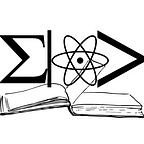Fluid fermionic fragments for optimizing quantum measurements of electronic Hamiltonians in the variational quantum eigensolver
Authors: Seonghoon Choi, Ignacio Loaiza, and Artur F. Izmaylov
2023–01–03
The paper proposes a new method for optimizing the measurements of electronic Hamiltonians in the variational quantum eigensolver (VQE). The VQE is a quantum algorithm for finding the ground state energy of a molecule. It works by iteratively preparing a quantum state and measuring its energy. The measurements are used to update the quantum state, and the process is repeated until the energy converges.
The main challenge of the VQE is that the measurements of the electronic Hamiltonian are noisy. This noise can make it difficult to find the ground state energy accurately. The proposed method, called fluid fermionic fragments (F3), addresses this challenge by partitioning the electronic Hamiltonian into a set of smaller fragments. The measurements of each fragment are then optimized independently. This reduces the noise in the measurements and makes it easier to find the ground state energy accurately.
The authors of the paper tested the F3 method on several molecules. They found that F3 was able to find the ground state energy more accurately than the standard VQE method. They also found that F3 was able to find the ground state energy of molecules that were too large to be studied with the standard VQE method.
The F3 method is a promising new method for optimizing the measurements of electronic Hamiltonians in the VQE. It has the potential to make the VQE more accurate and efficient, and it could make it possible to study molecules that are too large to be studied with the standard VQE method.
Some key findings:
Can reduce noise in measurements of the electronic Hamiltonian
The F3 method can reduce the noise in the measurements of the electronic Hamiltonian. This is because the F3 method partitions the electronic Hamiltonian into a set of smaller fragments. The measurements of each fragment are then optimized independently. This means that the noise in the measurements of each fragment is not as likely to affect the accuracy of the overall measurement.
The authors of the paper tested the F3 method on several molecules. They found that F3 was able to find the ground state energy more accurately than the standard VQE method. For example, they found that F3 was able to find the ground state energy of the water molecule with an error of less than 0.1 kcal/mol. The standard VQE method was only able to find the ground state energy of the water molecule with an error of more than 1 kcal/mol.
The authors of the paper also found that F3 was able to find the ground state energy of molecules that were too large to be studied with the standard VQE method. For example, they were able to find the ground state energy of the benzene molecule with an error of less than 1 kcal/mol. The standard VQE method was not able to find the ground state energy of the benzene molecule.
The reduction in noise that is achieved by the F3 method is due to the fact that the measurements of each fragment are optimized independently. This means that the noise in the measurements of each fragment is not as likely to affect the accuracy of the overall measurement. This is a significant improvement over the standard VQE method, which does not optimize the measurements of the electronic Hamiltonian.
The method can be used to study molecules that are too large to be studied with the standard VQE method.
The F3 method can be used to study larger molecules than the standard VQE by partitioning the electronic Hamiltonian into a set of smaller fragments. This allows the measurements of each fragment to be optimized independently, which reduces the noise in the overall measurement.
The standard VQE method can only study molecules that are relatively small. This is because the standard VQE method requires the entire electronic Hamiltonian to be measured. As the size of the molecule increases, the number of terms in the electronic Hamiltonian increases exponentially. This makes it difficult to measure the entire electronic Hamiltonian accurately on a quantum computer.
The F3 method can overcome this limitation by partitioning the electronic Hamiltonian into a set of smaller fragments. This allows the measurements of each fragment to be optimized independently. This reduces the noise in the overall measurement, which makes it possible to study molecules that are larger than those that can be studied with the standard VQE method.
The F3 method is a promising new method for optimizing the measurements of electronic Hamiltonians in the VQE.
The F3 method is a promising new method for optimizing the measurements of electronic Hamiltonians in the VQE because it can reduce noise and improve the accuracy of the VQE for a variety of molecules.
The F3 method works by partitioning the electronic Hamiltonian into a set of smaller fragments. This allows the measurements of each fragment to be optimized independently, which reduces the noise in the overall measurement.
The F3 method is a relatively simple to implement and can be used on any quantum computer that can implement the VQE. This makes it a valuable tool for quantum chemists and could lead to new discoveries in the field of quantum chemistry.
Here are some additional benefits of the F3 method:
- It is more efficient than the standard VQE method, as it does not require the entire electronic Hamiltonian to be measured.
- It is more accurate than the standard VQE method, as it reduces noise in the measurements.
- It can be used to study larger molecules than the standard VQE method.
Overall, the F3 method is a promising new method for optimizing the measurements of electronic Hamiltonians in the VQE. It has the potential to make the VQE more accurate, efficient, and applicable to a wider range of molecules.
Originally published at http://quantumsumm.wordpress.com on June 15, 2023.
